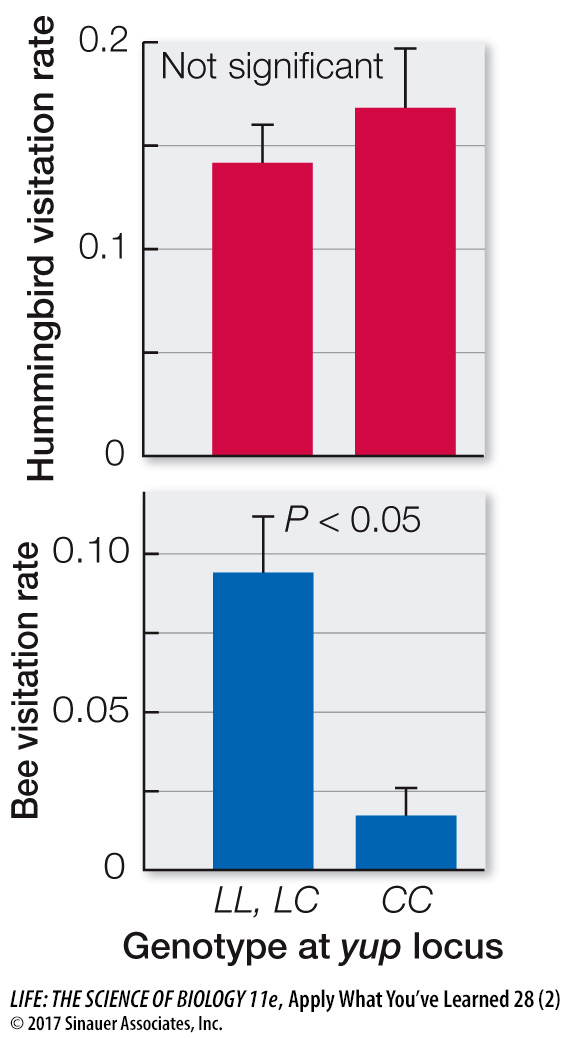Apply What You’ve Learned
Review
28.3 All parts of a flower are modified leaves.
28.3 Angiosperms and their animal pollinators have been coevolving for more than 150 million years.
Original Paper: Schemske, D. W. and H. D. Bradshaw, Jr. 1999. Pollinator preference and the evolution of floral traits in monkeyflowers (Mimulus). Proceedings of the National Academy of Sciences USA 96: 11910–

Recent studies show that switches in pollinators and large changes in flower morphology can evolve quickly. In the photographs above, the Mimulus species are excellent examples of such changes. Despite being sufficiently closely related that they hybridize readily in the lab, these species differ greatly in morphology and color. They also differ in their pollinators, with M. cardinalis pollinated exclusively by hummingbirds and M. lewisii pollinated primarily by bees and other insects. (Note that other species may visit the flowers, but not pollinate them).
Questions
Question 1
Given their pollinators, are the floral colors of the two species what you would expect? Explain your answer.
The bright red color of M. cardinalis flowers is consistent with the expectations of a bird-
Question 2
What differences are apparent between the flower corollas in the two species? Present a reasonable explanation for these differences, based on the pollinator differences.
The corolla of M. cardinalis is narrow and tubelike, while that of M. lewisii is broader and flatter. The narrow tubular corolla of M. cardinalis is an adaptation that accommodates the long beaks and tongues of its hummingbird pollinators, while restricting pollination by other species.
Question 3
Researchers found that variation at a single locus (called yup) was responsible for the color differences and that the M. cardinalis allele (C) is recessive, whereas the M. lewisii allele (L) is dominant. Thus CC genotypes are red, while both LL and LC genotypes are light pink. The researchers then examined the preferences of bees and hummingbirds for the different genotypes at the yup locus, keeping the rest of the genetic background of the plant the same. Their findings are shown below. (Remember, these are visitation rates, not necessarily pollination rates.)

Based on these results, how does variation at the yup locus affect visitation by bees and hummingbirds?
Variation at the yup locus did not significantly affect visitation by hummingbirds, but bees were much less likely to visit the CC genotype (red) flowers.
Question 4
Do the results presented in Question 3 show a significant preference for red or pink flowers by birds and bees, respectively? Given your answer, why do you think most bird-
Although birds showed a slightly higher preference for red flowers over pink flowers, the difference shown here is not statistically significant. However, bees visit red flowers at a significantly lower rate than pink flowers. It may be that the primary function of red flowers is to discourage visitations by bees so that pollination is restricted to hummingbirds.